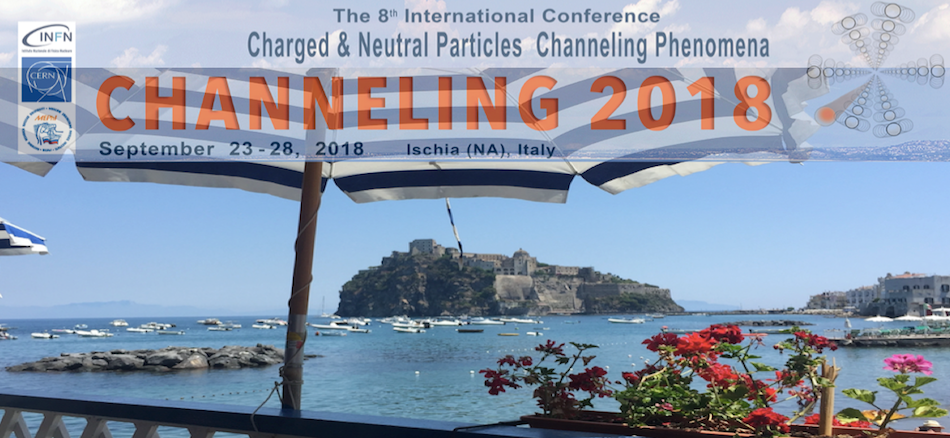Speaker
Mr
Sergei Stuchebrov
(Tomsk Polytechnic University)
Description
This report demonstrates the results of experimental and theoretical studies of generation and transmission mechanisms of Cherenkov radiation in an optical fiber when an electron beam hits (or interacts with) a fiber. Measured dependence of a signal level of Cherenkov radiation transmitted through the fiber on value of incidence angle is presented. The experimental study has been carried out in Tomsk Polytechnic University using a 6 MeV electron beam extracted from microtron [1]. The divergence of an electron beam was 5 degree.
Employed fiber was the flexible and transparent fiber made by dielectric with refraction index n=1.4 [2]. Energy of used electrons satisfies the Cherenkov criterion for radiation emergence in the fiber. In the current experiment the edge of the fiber with length of 5 mm interacts with an electron beam and the rest part of fiber covered by a lead foil. Produced radiation is transmitted through the fiber and then detected by photomultiplier tube (PMT). Fiber is placed parallel to center of the beam trajectory axis and during the scan crosses the center of an electron beam.
The level of signal detected by PMT depends on several factors. First, the Cherenkov radiation intensity is directly proportional to the intensity of an electron beam which is function of the electrons propagation angle. Thereby, the fiber shift from the electron beam center causes the decrease of Cherenkov radiation intensity in the case of the divergence electron beam where most electrons travel along the center of the beam trajectory axis. Second, for the case of large value of the fiber shift, the mean free path of electrons in the fiber decreases due to variation of angle between electrons and the fiber and the Cherenkov radiation intensity drops. Important factor that determines the signal level is the beam pattern of generated radiation. As is generally known [3], the most Cherenkov photons are emitted in the forward direction at an angle relative to the electron trajectory theta θ by cosθ=c/(nv), where c is the speed of light and v is the electron velocity. There is another factor which can influence the beam pattern. This is the fiber transparency. To decrease of noise level the used optical fiber will transmit light if the light deviation from the fiber center axis is less the 5 degree. Light which does not fulfill this condition will be extinguished and can not spread in fiber. Therefore, a maximum signal of detected radiation corresponds to angle between electrons and fiber for condition where the angle of a maximum of angular distribution of Cherenkov radiation is equal to direction of the fiber center axis.
Theoretical investigation and experimental test of influence these factors on a detected signal level are very significant for development and improvement of transverse beam size diagnostics using optical fiber.
References
1. Stuchebrov S.G., Miloichikova I.A., Krasnykh A.A. Journal of Physics: Conference Series. 732 (2016) 012033.
2. Bolin, Frank P., et al. Applied optics 28.12 (1989): 2297-2303.
3. Jackson, John David. Classical electrodynamics. Wiley, 1999.
Author
Mr
Sergei Stuchebrov
(Tomsk Polytechnic University)
Co-authors
Ms
Angelina Krasnykh
(Tomsk Polytechnic University)
Ms
Irina Miloichikova
(Tomsk Polytechnic University)
Mr
Mikhail Shevelev
(Tomsk Polytechnic University)
Mr
Yury Cherepennikov
(Tomsk Polytechnic University)

